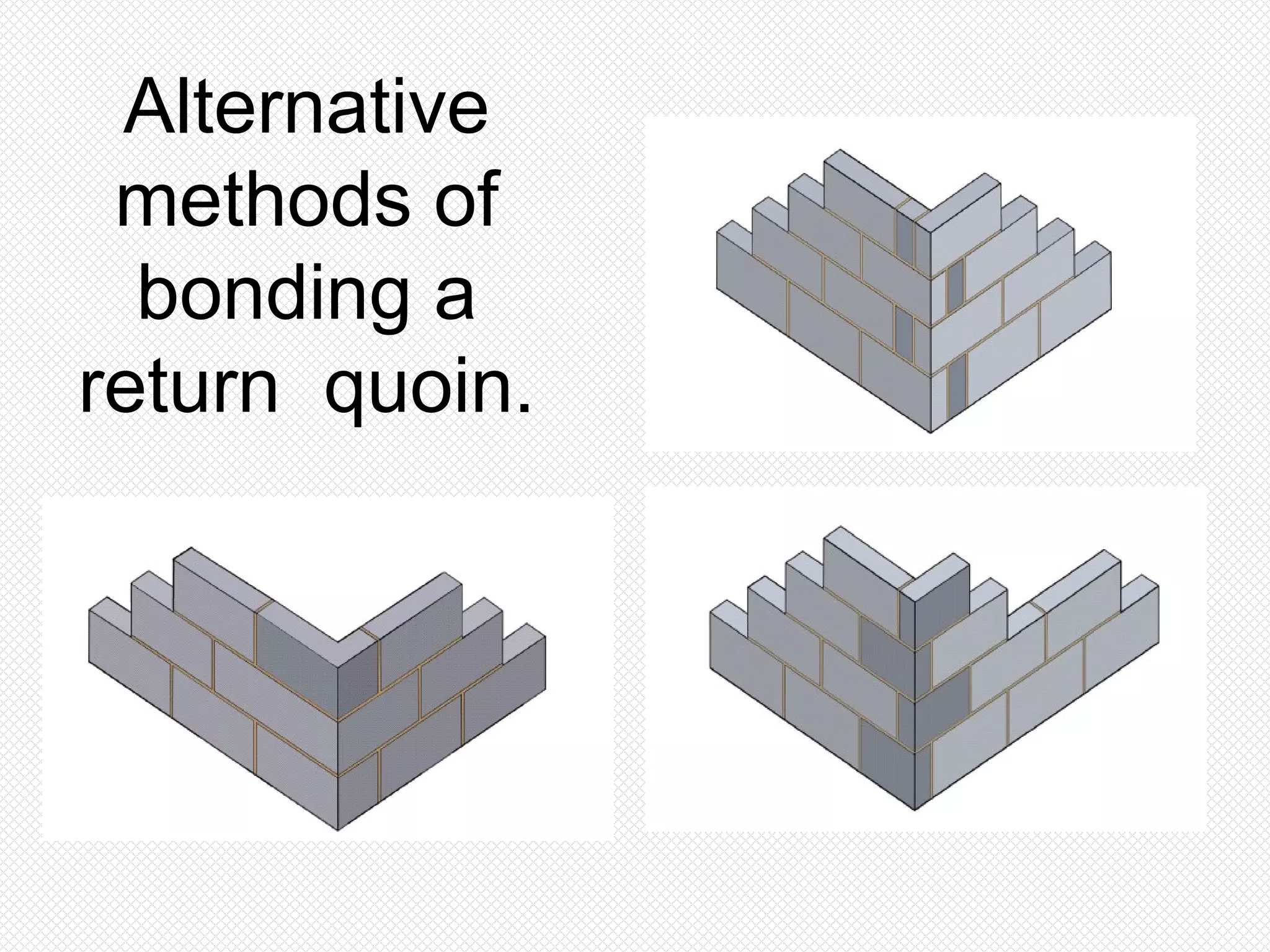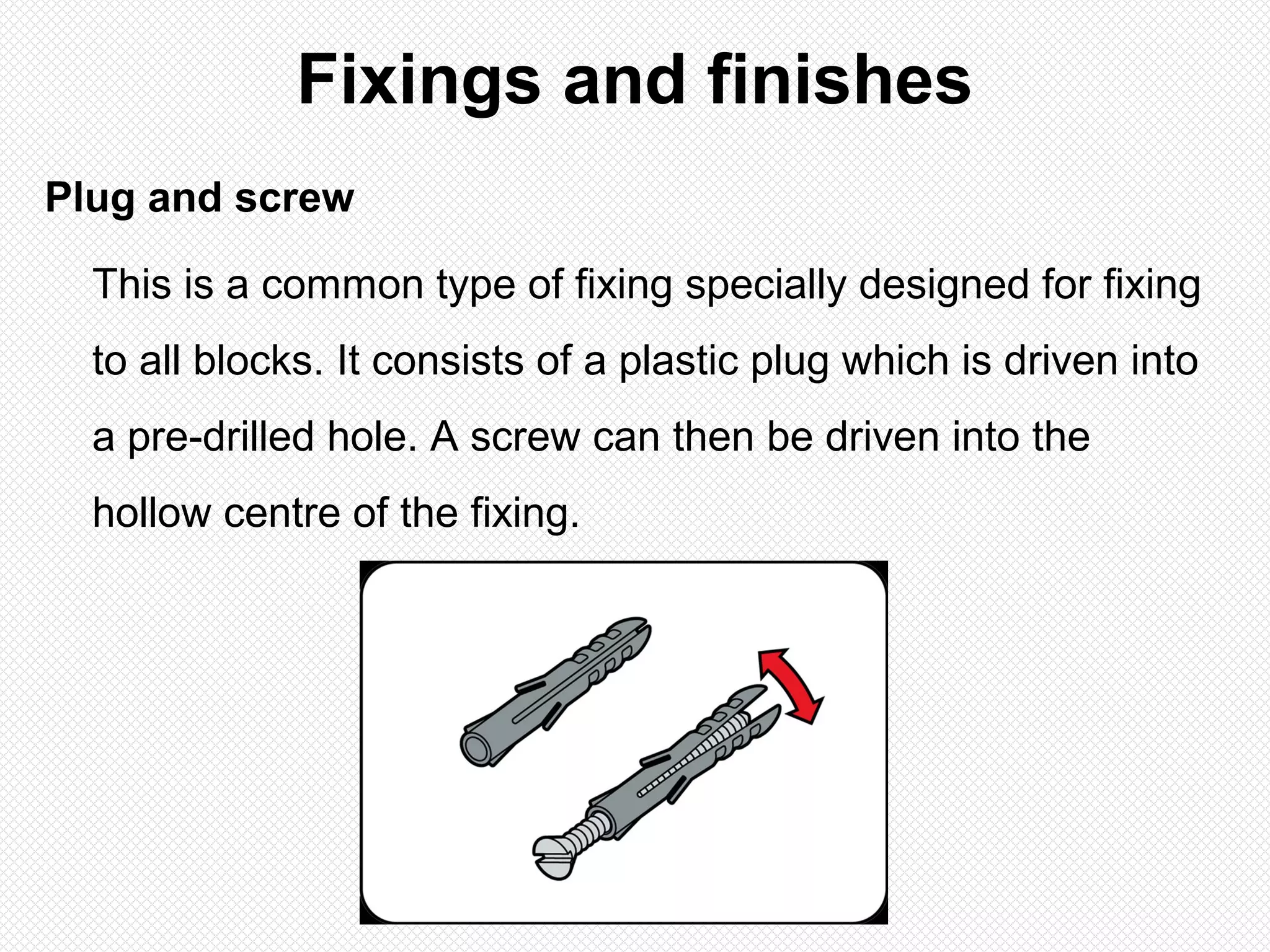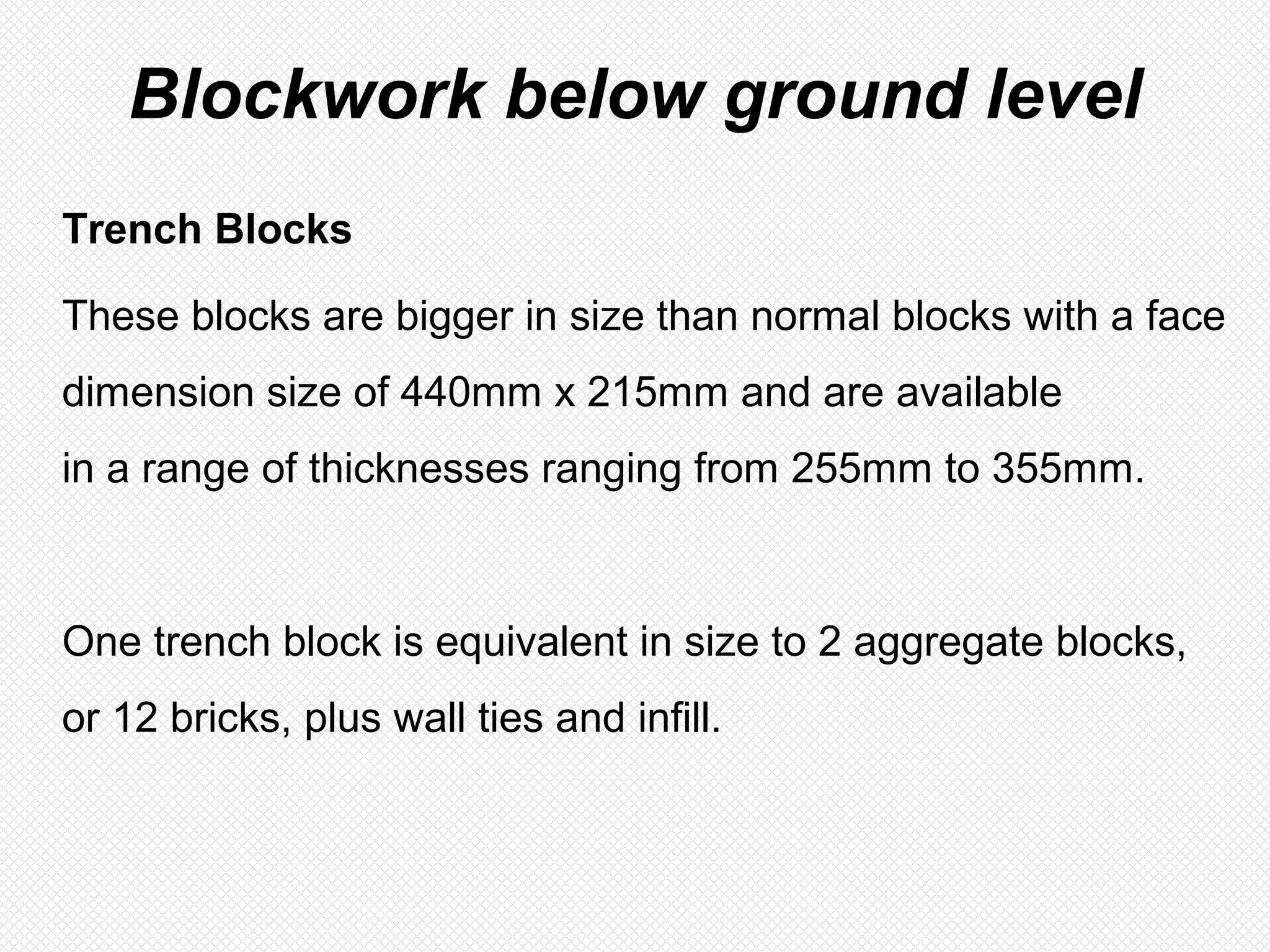- Basic blocks are typically 440mm x 215mm x 75-300mm thick and weigh 9.9-30kg. They are manufactured to compressive strength standards of 2.8-7N/mm2.
- Load bearing blocks are dense and strong, made of cement and aggregates. Non-load bearing blocks are lighter using lightweight aggregates.
- Special blocks include coursing blocks, return blocks, and reveal blocks used at openings to maintain bond and insulation.





































